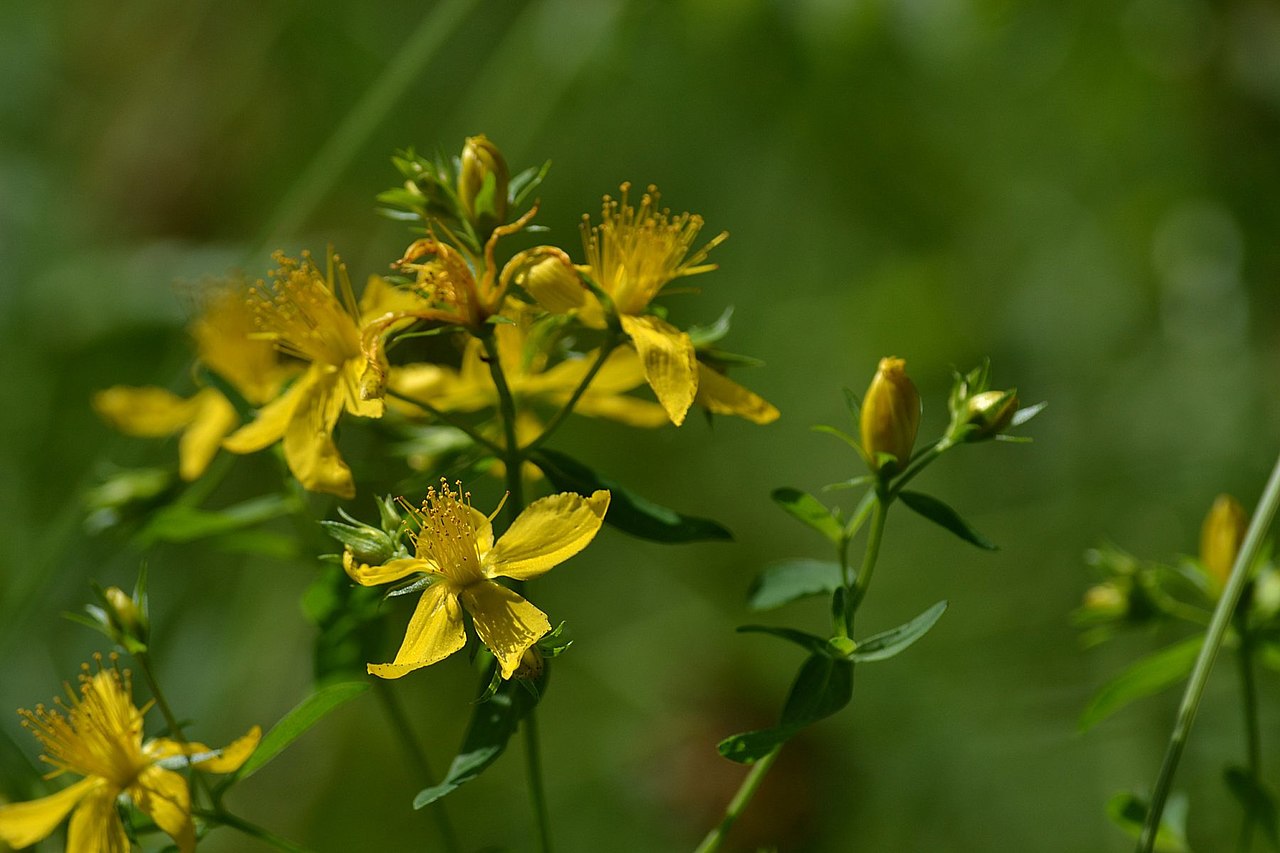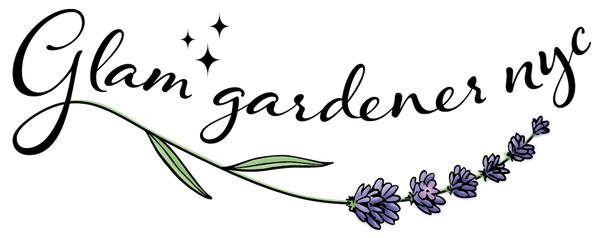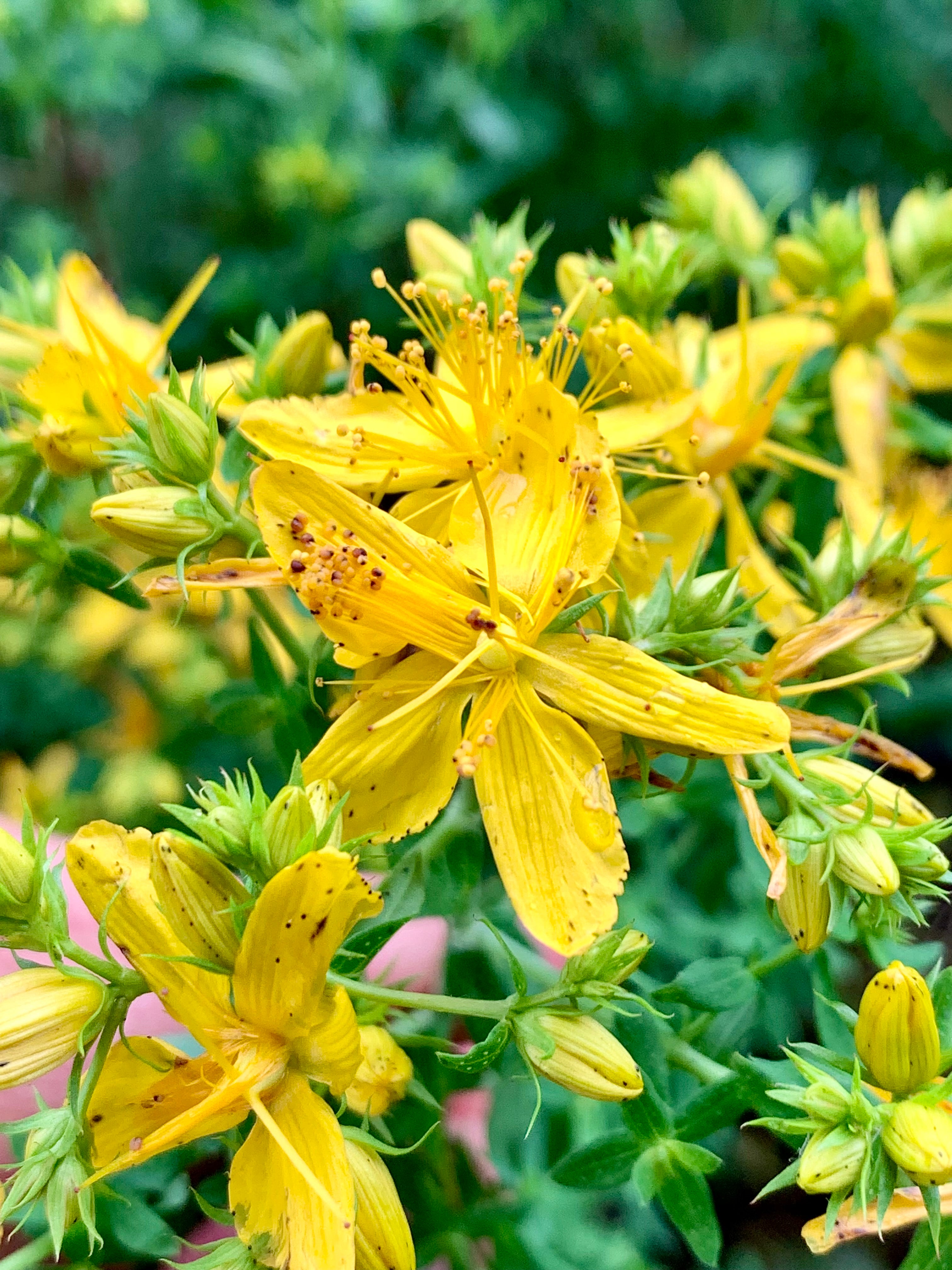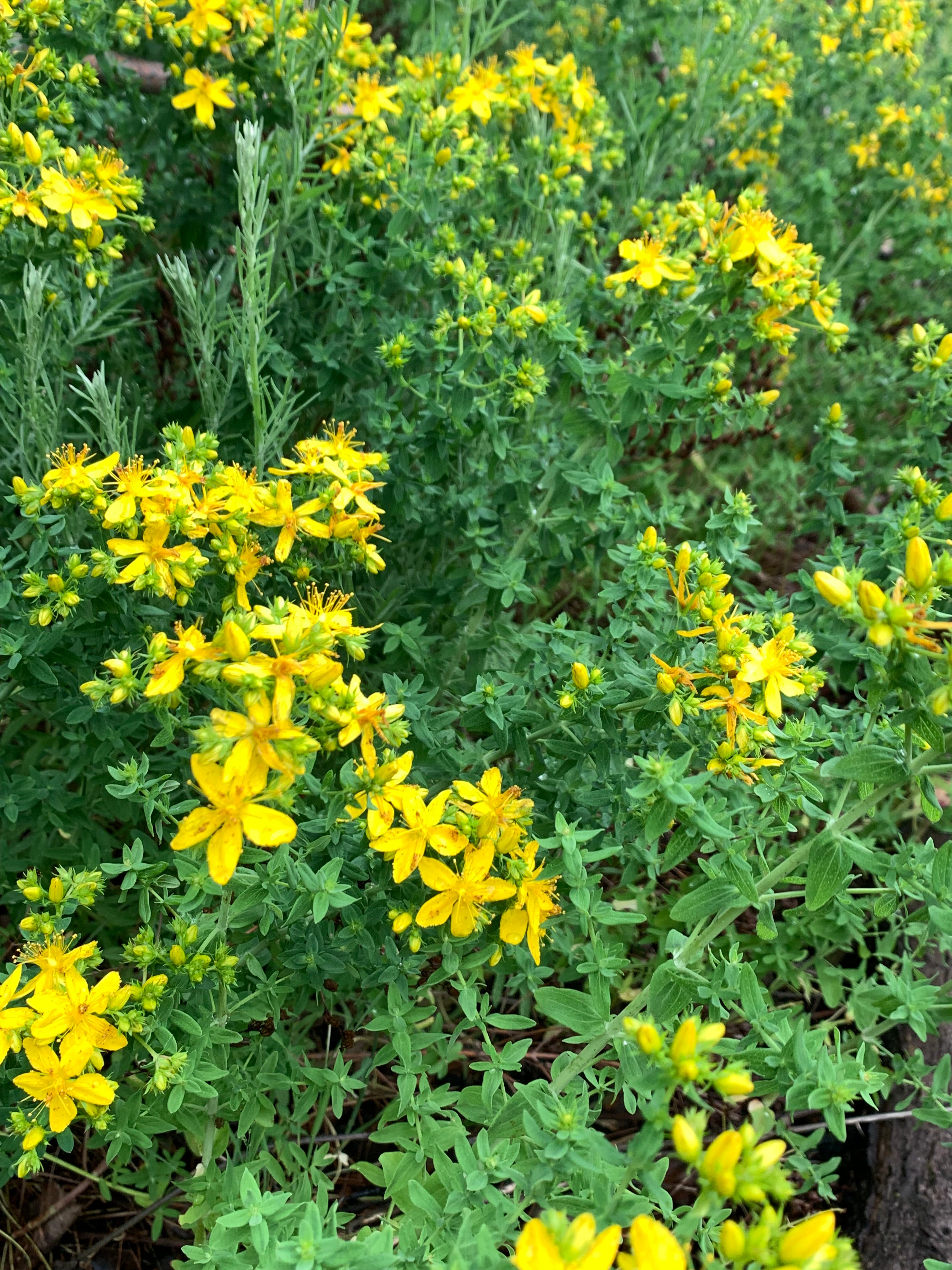ST. JOHN'S WORT: A WILDFLOWER & NATURAL REMEDY
How does St. John’s wort work as a natural remedy for depression and SAD (seasonal affective disorder)?
An introduction to St. John’s wort, a wild-growing medicinal plant with a rich history of use in herbal medicine. An article by Glam Gardener—a small business offering wild plant and organic remedies in New York and online.
St. John’s wort is known as the anti-depressant, mood-boosting, seasonal affective disorder battling plant.
In short, St. John’s wort has been used for thousands of years as a healing plant and it’s been extensively researched for its effect on mild to moderate depression. The results are promising, but you should take caution before taking this plant if you are on medications that it might interact with.
But keep reading for a thorough introduction to this wild-growing medicinal plant.
What is depression?
Depression is tough to say the least. Depression is characterized as a serious mental disorder that can affect anyone and can cause a persistent feeling of sadness and loss of interest.
According to the National Institute of Mental Health, anywhere between 7% and 16% of the United States population has experienced a depressive episode. Depression is a complex phenomenon for which nobody has the cure. And we wouldn’t be doing our due diligence if we claimed we had the cure either. We don’t.
However, many people have had success using healing herbs and natural remedies to combat feelings of depression, negative mood, low energy, and grief.
St. John's wort is one of those plants. As lovers of herbal remedies, we're lucky that this herb has a few thousand years of anecdotal evidence and some promising scientific research to back it up as a remedy effective for depression, low mood, and seasonal affective disorder.
People may be seeking plants like St. John’s wort for their depression instead of pharmaceutical antidepressants to avoid unwanted side effects from them.
So, let’s traverse a couple thousand years of history together and learn a thing or two about why this plant is so revered.
A disclaimer before we begin:
Before we get into the weeds, let's offer a disclaimer. Our heart goes out to anyone struggling with depression. We are not offering medical advice in this article nor passing judgement to those using non-herbal remedies to cope with depression.
We are excited and hopeful about the prospect of natural remedies and are interested in sharing information.
We hope this information inspires you to seek help in a way that's best suited for you. Consult your doctor and a mental health professional if you are struggling with depression. It could save your life, and we want that for you. <3
We’re going to dive a little bit into how this plant works and how you might go about using it. However, St. John's wort is powerful! So we offer some cautionary information for using this plant safely.
Always consult a doctor, naturopath, or clinical herbalist before consuming herbal remedies or combining with pharmaceutical medication.
So what exactly is St. John’s wort?
St. John’s wort is a wild-growing plant with a yellow flower. It derives from Europe, but grows in the United States along sunny trails. It makes a beautiful and bright addition to any wildflower garden and its uses are quite diverse.
Its flowers stain purple when crushed. Strange, right? So it's used by natural fabric dyers for coloring fabric.
As a natural remedy, it has many uses. It's widely known as the anti-depressant, mood-boosting, seasonal affective disorder-battling plant. Quite the trifecta!
Why do so many medicinal plants end in "wort" like St. John's wort?
All plants have a latin name and usually a few common names. Think of this as the name on your government ID and your nickname.
St. John's wort is the common name for a plant called Hypericum perforatum.
The common names of many healing plants end in “wort.” If you ever stumble upon a “wort," then this should be a sign to you to inquire further.
For example, Mugwort is a medicinal plant that we love so much, we offer both a tincture and a tea infused with its leaves and flowers. And don’t forget about Motherwort, a plant in the mint family well-known for its heart-calming abilities. They both have a rich history as an herbal remedy.
Like Mugwort and Motherwort, St. John’s wort grows wild across the United States, but finds its roots in Central Asia and Europe. It has a long history of use in ancient European herbalism.
How do I identify St. John's wort when foraging?
From one forager to another, here's a basic beginner's checklist for identifying and harvesting wild-growing St. John's wort:
- First, harvest only on clean & legal land. This is land that you have permission to harvest on and has not been tainted by environmental pollutants.
- Second, ecosystem is everything. Knowing where plants prefer to grow is half of the battle. St. John's wort likes to grow along sunny fields and trails. It is not a plant that will be found in the understory of moist shaded forests.
- Third, season is also everything. In the New York, New Jersey, and Northeastern region of the United States where we live, St. John's wort blooms from June to August. The seasonality of plants have slight variations due to weather. But don't expect to find St. John's wort too far out of its season.
- Fourth, understand that St. John's wort will always have yellow flowers. But many other healing pants are growing in the same ecosystem and season as St. John's wort sport yellow flowers, like mullein. St. John's wort has gifted us its purple-staining flowers. This unique feature can be tested in the field by crushing a flower in between your fingers and seeing if your fingers stain purple. If it does, you are one step closer to proper plant identification.
- Sixth, St. John's wort features star-shaped flowers with 5 petals.
- Seventh, St. Johh's wort has a very distinct shrub that it grows on. Familiarizing yourself with its leaf growing patterns and other features will help you get comfortable identifying St. John's wort.
- Eighth, since St. John's wort is a wildflower, pollinators love it. Even though it is not native, it's important to harvest this plant ethically and sustainably by not overharvesting patches of this plant. Learning about ethical harvesting practices and implementing them is absolutely essential to every forager's checklist.
We can spend hours on plant identification alone, so we'll pause here. But hopefully this short beginner's checklist was helpful.
What is the history of St. John's wort as an herbal remedy?
As early as the fifth century B.C.E., the Greek physician and philosopher Hippocrates was one of the first to document the therapeutic uses of St. John’s wort. Thousands of years ago, ancient Greeks and Europeans used this plant for wounds, burns, poisonous bites, menstrual disorders, and to drive evil spirits away.
But in modern times, St. John's wort isn't so renowned for its ability to drive evil spirits away. It's most known for aiding with symptoms of mild to moderate depression.
Scientific researches have been studying St. John's wort for 50+ years. There have been more than 35 controlled clinical studies of St. John's wort extracts for the treatment of mild to moderate depression. Several meta-analyses (a meta-analysis is study of the results of many major studies) have documented the relative safety and probable efficacy of this medicinal plant.
How does St. John's wort work?
We’ll keep this simple and link some intense research studies at the bottom of this article for the folks that like to dive deep.
St. John’s wort contains many naturally occurring active substances. However, there are 2 that particularly stand out and they are called hypericin and hyperforin, which are believed to have the greatest medicinal activity.
Hypericin may lead to increased dopamine levels and decrease norepinephrine and epinephrine. These are all neurotransmitters and hormones that influence our critical functions, mood, and health.
Hyperforin exhibits antidepressant activity, antibiotic activity, and antitumoral activity.
This plant also has other compounds, including the following:
Flavonoids rutin, quercetin, and kaempferol: Flavonoids are a diverse group of phytonutrients found in nearly all fruits and vegetables and they’re responsible for their vivid colors. In recent years, scientists have turned to various flavonoids to explain some of the health benefits associated with diets rich in fruits and vegetables. Like other phytonutrients, flavonoids are powerful antioxidants with anti-inflammatory and immune system benefits. We’ll keep this simple and link some intense research studies at the bottom of this article for the folks that like to dive deep. We’ll keep this simple and link some intense research studies at the bottom of this article for the folks that like to dive deep.

Taking St. John's Wort as a tincture
How to take a St. Johns wort tincture and what makes ours unique.
How should I take it? You should seek a medical professional or clinical herbalist on specific guidance with dosing any herbal remedy. The most common dosage ranges between 1-3 times each day with meals, for up to 6 weeks.
Glam Gardener NYC offers a guide on how to take herbal tinctures. You can read the entire guide by clicking this link. We recommend 3-9 dropperfuls of tincture per serving size.
What else is it used for? Since it has antibacterial and antiviral activity, it is commonly used as a topical salve for wound healing, joint pain, and general skincare.
Glam Gardener NYC offers herbal products with nothing else besides organic, wildcrafted, and local ingredients. Our tinctures are made with wild-harvested plants, foraged from pristine forests in the northeastern region of the United States.
We harvested this St. John’s wort in a beautiful sunny field in Pennsylvania. The other ingredients in our St. John’s wort tincture include organic alcohol, water, and certified sustainable palm-based vegetable glycerin.

Precautions & Resources
St. John’s wort can interact with, and reduce the effect of some medications. Linked below is a guide.
Consult your doctor before consuming St. John's Wort if you are on prescription medication. To learn how St. John's wort may interact with common medications, click here for a resource by the Mayo Clinic.
We are advocates for self-empowerment, research, and natural healing. We encourage you to research the wealth of resources out there, both favorable and critical to St. John’s wort. Like just-about-every other natural and pharmaceutical therapy, the effectiveness of St. John’s wort as a remedy will continuously be under debate.
Many people refer to herbal remedies as plant allies. Meaning that they can be powerful aids in influencing our health. But there are no one-stop-shop cures for anything. We won’t get the results we want if we expect an ally to do all of the work. We find that approaching health holistically leads to the best results.
If you or a loved one is experiencing mild to moderate depression, here are some things we’ve found incredibly helpful.
-
Sunlight
Vitamin D
Spending time in nature
Gut health
Assessing diet
Targeting food sensitivities
-
Talk therapy
Cognitive behavioral therapy
Coaching
Removing toxins from beauty and household products
Daily movement
-
Exercise
Yoga
Seeking wisdom through books and talks
Support from friendly strangers, community, and loved ones
We wish you the best of luck on your journey. We're all in this together.
Resources:
Click this link for an excerpt about the medical attributes of St. John’s wort, from, “Herbal Medicine: Biomolecular and Clinical Aspects. 2nd edition.”
Click this link for an excerpt about clinical research and St. John’s wort from , "ABC Clinical Guide to Herbs."
Disclaimer:
We are not doctors and this blog does not offer medical advice. Many of St. John's Wort's health benefits are well documented in many herbal books, both old and new, and are not intended to diagnose, treat, cure, or prevent any disease. Furthermore, these statements have not been evaluated by the food and drug administration. When in doubt consult your healthcare provider or a clinically trained herbalist.
Example product title
Share
Join the Glam Fam
Join our email list for exclusive offers and the latest news.


